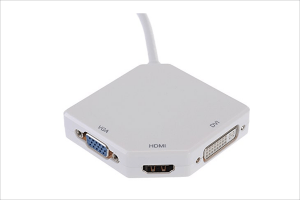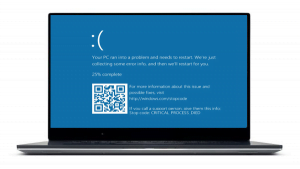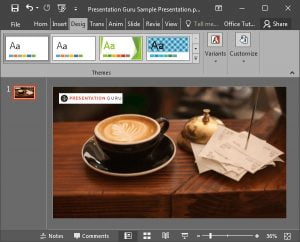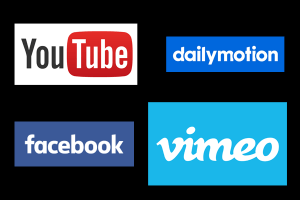5 Most Common Tech Problems for Presenters… and How To Avoid Them


Every speaker has had something go wrong with the equipment as they speak. The hard truth is that most technical problems are preventable with better preparation. In this post, Jim Harvey outlines the 5 most common technical glitches he’s encountered and gives a little hard-won advice on how to avoid it happening to you.
I was speaking at a world famous business school the other day, and for the first time in years, I had some technical problems with my laptop (Top of the range MacBook Pro retailing at over £2200.00). I’m a professional speaker, very well paid for this gig, and it’s really all my fault when things go wrong. I’ve either failed to prepare properly or failed to have a ‘back-up plan’ that I can leap into seamlessly. In this case I was working near the edge of the limits of a) the software, b) the hardware and c) the presenter, in that I had great visuals with embedded video clips, sound, animations and hyperlinks. I’ll tell you what happened at the end, but for now, here’s my own list of the 5 things that I see presenters do, that get them into the kind of ‘danger’ I encountered in the hi-tech lecture hall on campus.
1 – THE PRESENTER CAN’T CONNECT TO THE PROJECTOR OR OTHER TECHNOLOGY AND ENDS UP LOOKING FOOLISH
TAKING A MAC TO A GIG AND EXPECTING IT TO WORK
The most common problem for Mac users who want to use their own computer to do a presentation is that ‘Oh no, I forgot that Steve Jobs was a one-eyed maniac and Macs don’t have a VGA /HDMI connector’ problem. As I’m sure you know, the 16-pin cable (called a VGA cable), or an HDMI cable, that comes out of the projector or widescreen TV will not fit your Mac. There is no VGA port on your (or any) Mac. If you want to connect your mac (without using their wireless system ‘AirPlay’,) you will need to buy or borrow a “VGA Adapter”. This little device will link to the mini-display port on your Mac and allow your Mac and the projector/TV to talk to each other.
The latest versions of Mac also have the option of HDMI connectors too, but you’ll still need a cable for it because you’ll often find that conference rooms have had all the cables ‘borrowed’ even when the IT guy has said everything will be OK.
The easiest thing to do, of course is to buy a dual Mini Display Port to HDMI/DVI/VGA Adapter (Converter) so you are covered for all occasions.
Whatever the connection option, as a Mac user, the burden is on YOU to anticipate compatibility issues, and not on the organizers to accommodate you without any forewarning. This goes double if you want to use an iPad, AirPlay, Chromecast or whatever the latest tech toy might be.
A PC Might Be Just As Disastrous!
If you think using a PC instead of a Mac will save you from the horrors of a presenter’s ‘Twilight Zone’; you might be headed to face an episode of ‘Tales from The Crypt’. Microsoft eagerly updates Microsoft Office editions for Windows based operating systems far more frequently than its Mac variants. This unfortunately also means that you are likely to run into a number of issues as a presenter, ranging from device compatibility problems to legibility issues. For example, if you have created a presentation in say, PowerPoint 2016 and require using the system at the venue which has a slightly older version (e.g. Office 2013), your content might get messed up. Not to mention PPTX files from newer versions sometimes simply fail to open with older versions. The remedy for that can be to save the file as a PPT to run it in compatibility mode. And we all know how smooth the compatibility mode works! Not only can your presentation lag because of conversion from PPTX to PPT but some animations and transitions available for newer versions aren’t even available for PPT files.
Hence, it’s best to learn beforehand about the availability of software and hardware available at the venue; should you need to use the system provided by your hosts. Needless to say, using your own computer might be a safer bet. Having said that; make sure you have the necessary connectivity kinks ironed out. If the equipment at the venue is old, you might have to rely on a VGA cable alone and as you know, latest PC laptops usually don’t have a VGA port. Furthermore, additional cables sometimes can be in short supply or the HDMI provided by the organisers might be faulty, leading to frequent disruptions in display such as blank screens or you might end up with a rainbow colored screen.
Other than the aforementioned potential issues, any incompatibility with a connected device might result in a crashed driver. It isn’t all that uncommon for PC users to end up facing driver crashes when connecting to new device. And let’s not forget the worst case scenario such a crash may lead to; a “Blue Screen of Death”.
Bill Gates, Windows 98 Demo Results in Blue Screen of Death
If you think your presentation skills are bad, here is a video of the Windows 8 demo when plugging in a USB resulted in a BSOD. [Video Courtesy: MsGeek703]
To Bring Or Not To Bring Your Own Device!
You might have heard of BOYD, which is an initiative which encourages people to Bring Their Own Device. While BOYD is encouraged at startups, educational institutes and even presentations, it is worth weighing in whether it’s worth going BOYD for your next presentation.
When we think of BOYD, usually laptops aren’t really considered as a part of the BOYD initiative as much as hybrid devices like phablets or high-end tablets. Both of which can have a plethora of options tied to connectivity with projectors. Moreover, presenting your slides using a tablet or phhablet can result in hangs and compatibility issues.
It is however, worth mentioning here that in light of the above mentioned presentation related hassles that one might encounter, it is best to use at least your own laptop and account for connectivity cables, drivers and perform a test run for your slides before the presentation. On the contrary, if you’re going to use something like phablet, make sure you at least run remove the sim. The last thing you want is a caller ID replacing your on-screen slides when you get phone call in the middle of a presentation because your mom called!
Connecting a Mac or PC to a Projector using VGA or HDMI
If you need to know about how to connect your Mac or PC to a projector using VGa or HDMI, here are two video tutorials that can help you out with the basics.
Connecting a Mac or PC using VGA [Video Courtesy: Shane Thornton]
Connecting a Mac or PC using HDMI [Video Courtesy: Electrical Engineering and Technology]
JUST TURNING UP AND EXPECTING THERE TO BE VGA CABLES, SOUND CABLES AND EXTENSION LEADS
Whether you’re a Mac person or a PC user, don’t risk turning up and finding out that stuff works, or is even there. I arrived to do a pitch, in the brand-new, global headquarters of an international fashion brand in Paris to find that everything was perfect apart from the fact that they had no technology installed in the amazing conference rooms yet. Luckily we’d prepared to pitch without visuals, and it was perfect on that particular day, but we were lucky. There were other times when we might not have been.
2 – THE VIDEO FILES AND OTHER MULTIMEDIA WON’T PLAY – AND THE PRESENTER LOOKS BAD
MEDIA FILES IN GENERAL
Mac Users
As a sometime Mac user myself, I must warn my fellow Mac users that you live in a PC world. Never assume, without testing, that anything you do or use will work with PCs. Or vice-versa. Test all PowerPoint files on the PC in question. If you use Keynote, convert to PowerPoint before you try to show it on a PC. There is no “Keynote for PC”. You should also not assume that just because the presentation computer is a Mac, it has Keynote loaded. Always check beforehand.
Most of the serious problems we see at presentations and conferences, happen when presenters succumb to the temptation to include audio and video content in their presentations. As I did here. Simple slide shows are usually fairly trouble free, but multimedia, especially done by presenters who have never done a multi-media presentation before, is fraught with technical and non-technical trouble.
Presenters often fail to take into account the amount of time it will take to actually use video or audio in their talks. It may be a 30 second clip, but setting it up, talking about it, and explaining it, throws their timetable into disarray. A five-minute video clip takes at least 8 minutes to use (more if it’s not embedded and you need to go searching for it). Whenever possible, pre-cue your non-embedded media and at the very least, put it where you can find it instantly and not scroll up and down and click around looking for it.
Again, all of this is made more difficult if you have set up your PC to have a 2 display option so you can see you slide notes, if you want to display video for example, make sure that when you press play, the video shows on the presentation screen and not the second (presenter) screen so only you can see it.
PC Users
If you are a PC user, the chances are you will be using PowerPoint for your presentations. However, even if you’re using a different presentation app or simply intend to play a video using a media player, there are some formats that are safe to use with a Windows OS. These include WMV, AVI and MP4 for videos and MP3, WAV and WMA for audio files. While PowerPoint also supports MOV, provided you have the QuickTime Player installed, using the aforementioned formats can be a safer bet, as you should be able to run these formats without the need for installing any additional codecs. Furthermore, both legacy and recent editions of PowerPoint (PowerPoint 2010 and later editions) seamlessly support these media formats.
MEDIA FILES (LINKS TO MEDIA & CONNECTIONS)
If you have incorporated media files into your presentation, be aware that while PowerPoint (And Keynote) embeds images into the PowerPoint presentation file, it frequently only ‘links’ to audio and video files, it doesn’t embed them. What this means is that when you move a copy of your PowerPoint presentation on another computer, but do not move the media files as well, then the video, sounds and other multimedia content will not be there when you try to show them.
The best solution to this is to put all the relevant media files and the PowerPoint master file in the same folder (do this while building your presentation, so that you add the media files into the shared folder, then insert them into the presentation, not as an afterthought). Then when you want to show a presentation on a different computer you just copy the whole folder to take with you or send to the host with clear instructions as to what you want them to do when moving the show to another computer.
Of course there are exceptions to the link/embed model, and the latest versions of PowerPoint and Keynote have ways that you can embed the multimedia content inside the presentation file, but it’s always best to assume the worst and provide your media files along with your presentation if you are moving it off your ‘home’ computer.
MEDIA FILES (COMPATIBILITY)
Then in a further complication, let’s remember that not all computers can play all media formats. This is particularly true if you are moving files from Macs to PCs or vice versa. Please don’t assume that any computer can play any given media format, even when the video is embedded in a PowerPoint video and you’re playing it on PowerPoint for Mac. Test all audio, sound and other files before the show, and even that doesn’t guarantee success, because I have also found out, the hard way, that many PCs and laptops have unexpected ‘gaps’ in what they can and can’t play, and sometimes it is a hardware (processor/media card limitation problem,) rather than a software issue that gets in the way.
Inserting Online Videos to Presentations
To circumvent issues tied to media file compatibility and connectivity, you can opt for adding videos from online sources. Many presentation apps like PowerPoint, Prezi, Google Slides, etc; allow embedding online videos. Furthermore, there are a number of add-ins that can be used to enable this feature for your presentation app. Presenters using legacy editions of PowerPoint can use the iSpring Presenter for this purpose. Similarly, Keynote users can use the LiveSlides add-in to add videos from various video streaming websites to Keynote. This add-in also has versions for Windows and Mac editions of PowerPoint.
3 – THE SOUND DOESN’T WORK – AND GUESS WHAT?
Media Files (Particularly Audio)
If you are playing media that includes audio – have you warned your hosts of this so that they know to connect the computer to the sound system? Never assume that this will be done as a matter of course. Connecting the computer to the sound system is frequently not the default, and will probably not happen if you fail to ask for it beforehand. Fail to do this and you may end up with the built-in weak, tiny speakers on the laptop projecting the sound to a room of 100 people and you’ll look amateur and unprepared.
Is the sound card on the presentation computer even working? Fail to confirm this and you might not even have weak and tiny. Moral of this story: always do a sound check of your microphone AND your computer.
PC Users
Macs tend to be pretty robust and reliable bits of hardware, and because there are very few models in each range, they are predictable in what they can and cannot do. It’s not the same for PCs. Seemingly identical PCs from the same brand, often have vastly different power and capability. They can range between amazing and so terrible they can barely start up.
Because this inconsistency exists, and that corporations often buy large numbers of laptops barely able to do anything more than connect to the LAN in the office, it is essential that any PC to be used in presentations be run through its paces prior to showtime and asked to do everything it will be called upon to do for the show. If not, it may surprise you at exactly the wrong moment.
The Internet
The first rule of the Internet for presentations: if you can possibly avoid connecting to the internet to do your presentation, then avoid connecting to the internet to do your presentation.
Sometimes, however, there is no substitute for the Internet. Perhaps you are demonstrating a web-based application or website. That’s fine, but be aware that you have introduced an unpredictable variable and significantly increased your probability of technical failure. Have a backup plan if you lose connectivity or something doesn’t seem to work properly, and of course, test it before hand on the presentation computer in the location you plan to use connected to the network you plan to use.
For a demonstration of what to do and not to do when the internet (or any other technology) fails, see Steve Jobs vs Steve Sinofsky. Jobs and the Apple team had obviously rehearsed the potential problem so he didn’t panic, told a lovely story from his past, and let the tech support fix the problem for him to move on without a pause. Sinofsky, on the other hand, panicked, froze, ran off the stage and made us all cringe. Steve Jobs emerged looking even cooler, Steve S was diminished.
If you are showing a YouTube video (almost never a good idea), open the video in a browser window and cue it to the right bit before the show. This will allow you to quickly move to the video, rather than pull it up and wait for the commercials to finish and stuff to load. If you have multiple videos, open multiple tabs in your browser.
But if you really want to show a YouTube video, it’s much better to control the uncertainty and download the YouTube video onto your computer beforehand, embed it in your PowerPoint presentation and play if from your computer.
Finally, if the hosts have not specifically said that you will have internet connectivity, don’t assume it will be there. If it is important to you, ask. Even when you do have such connectivity, test it out in the actual location of your presentation.
The bandwidth may not be up to your requirements or the hotel broadband access you paid for might work in your hotel room, but not in the conference rooms (different plan, different fee). The further you travel from major urban centres, and anywhere in France, the worse this will get.
4 – THE FORMATTING HAS CHANGED AND THE SLIDES SUDDENLY LOOK RUBBISH – AND…
The fonts have all changed
If your presentation is to be given on a computer other than the one used to prepare it (a common state of affairs), remember that if your favourite font is not on the computer used for the presentation it will not display. It will default to something like Arial. If your presentation design will be spoiled if all your titles aren’t in 24 point ‘PigPen’, then you will need to ensure that ‘PigPen’ is loaded on the presentation computer or you need to make arrangements to use your own computer at the event by plugging it into the projector directly. This in itself has huge dangers unless you check and test the projector in the room, on the day, with the actual projector, cable length, etc.
Your Formatting Gets Wrecked
When you plug a digital projector into your computer, the aspect ratio of the display changes. If your formatting is simple, and follows the ‘layouts’ of the PowerPoint or ‘Keynote’ slide templates then that shouldn’t be a problem. But, if you have carefully arranged things in a very particular manner, on top of the slide layouts and used lots of tabs, spaces, text boxes and lines, it may not translate so well to the big screen when connected to a strange TV or projector. This is even more dangerous should you send that presentation in advance to the host, because they’ll open it up on their PC, and load it to the conference PC and all kinds of weird stuff can happen then.
5 – THE SCREENSAVER COMES ON FOUR TIMES AND IS PASSWORD PROTECTED – AND THE PRESENTER GOES HOME…
Just make sure that you’ve checked that your screen saver is switched off – via ‘Control Panel’ in windows and ‘System Preferences’ in Mac. It’s a real shame if you’re just finished warming the audience up with your opening gambit, and you press the button to display your killer first slide, and they see that ‘screen locked, password needed’ dialogue box. It happens to even the most experienced presenters. So just make sure that you’ve switched yours off, or if you’re using a borrowed laptop or PC, that they’ve done the same.
Watch Out For Disruptive Apps
Screensavers aren’t your only enemy! There are a number of apps which can cause a major disruption during your presentation. This is especially true if you’re using a PC. This can include anything from an antivirus software to an app demanding an update. Such a disruption can not only be embarrassing but it can also take a bit of time to close the app and get back to where you are, break your momentum and ruin your presentation. Not to mention, by the time you restart your slideshow, you might turn around to find an empty hall!
BACKUPS FOR WHEN ALL ELSE FAILS
Whatever option you choose, make sure that you have a backup of your whole presentation, with media files, on a CD/DVD or a portable drive, at hand. If the presentation, sound, video or computer suddenly fails, or you run into a hopeless compatibility issue, switching to another machine without fuss or embarrassment makes you look like a real pro, rather than a fumbling amateur.
The Cloud is Your Friend!
It is always wise to backup your presentation to the cloud, using a service like OneDrive, iCloud or Google Drive. This can not only provide you an instant backup for your presentation in the case of any eventuality but also give you a PowerPoint alternative, should you need one! Let’s say your presentation file somehow ends up getting corrupt or won’t play with the installed version of PowerPoint or Keynote on the computer available at the presentation venue. In such a case you can quickly download your presentation or even present it directly via PowerPoint Online (using OneDrive), Google Slides or in the case of Keynote presentations, using iCloud.
There are also a number of other cloud services which have their pros and cons and support different file formats. Even if you run into internet connectivity issues at the host computer or in case there is no connectivity at the venue, you can fall back to your 3G/4G connection to download your presentation file on your smartphone or make a Wi-Fi hotspot to bring connectivity to a laptop or desktop computer. Since presentation files are usually lightweight, you should be able to get your backup up and running in no time. The point is; the cloud is your friend!
PS – What happened to me?
Remember I was presenting there at this MBA school and the technology went wrong? What did I do? I followed Steve Jobs’ example from earlier in this post. I told a true story about a technology mishap earlier in my career, to keep the crowd busy and entertained, and allowed a very helpful audience member to help me in the background. He fixed the connection problem for me, I told my story, he sat down proud of his achievement, I thanked him profusely and allowed the audience to blame the Business School’s technology, while all along I knew it was my fault anyway.
IN CONCLUSION
We’ve all had days and times when the equipment that we’ve rehearsed with fails. Most of us can deal with that. But the unforgivable glitches are those that we allow to happen to us when we really should know better. I was at a conference in the US last year and after 3 days, speakers were still walking onto the stage to find that their slides didn’t fit the screen or their video didn’t work, or the remote control was not one that they’d used before. As an audience member I had no sympathy, and in every case I felt that the lack of readiness reflected more on the speaker than the hotel, or the conference organiser.
After the first day, I started finding speakers that I liked just to warn them that the sound was rubbish and the system didn’t work with Macs. Even then most of them turned up with 5 minutes to spare and expected everything to work. Can you guess the subject of the conference? That’d be right. Presentation skills. I decided then that I’d never allow myself to do that again.





























John Zimmer
25th August 2016 at 2:29 pm
Great post Jim. Comprehensive with lots of concrete tips to avoid technical mishaps on your next presentation.
Clif Patrick
1st August 2017 at 9:38 pm
Thanks for your excellent piece! I see “Murphy” has attended some of your presentations as he has attended many of mine. I always bring my ‘kit’ when presenting at a new venue, no matter what I was promised. If I encounter no issues, the bag can stay zipped up. Thanks to “Murphy,” my kit has grown over the years to include my laptop, projector, screen, extensions, flashlight, a few tools, batteries, cables & adapters, a clamp-on lectern light, gaffers tape, etc. All that and Murphy” still finds things to teach me.
Bruna Martinuzzi
3rd September 2018 at 3:32 pm
An excellent article in every respect!
john nicholas
21st January 2021 at 5:30 am
This blog really provides a positive reply, as I have a printer and it shows Epson wf-7620 error code 0x97 while I try to connect with devices, so what is the crucial measure to follow, looking for steps. Really a great watch!